Video Streams and CCTV with OpenCV
Overview
The utilization of video surveillance systems has witnessed significant growth in today's interconnected world. These systems are extensively deployed in residential, commercial, and public spaces. Computer vision advancements, including tools like OpenCV and Python's VideoCapture, have played a vital role in enhancing video surveillance capabilities. This comprehensive guide provides an in-depth introduction to video streams and closed-circuit television (CCTV) systems, with a focus on the significance of video compression and video capturing with OpenCV in Python.
Introduction to Video Streams and CCTV Systems
Video streams and CCTV systems are two closely related concepts. A video stream is a continuous flow of video data that is captured by a camera and transmitted to a receiver. A CCTV system, on the other hand, is a video surveillance system that uses cameras to monitor a specific area or space. CCTV systems come in different types, including analog, IP-based, and hybrid systems.
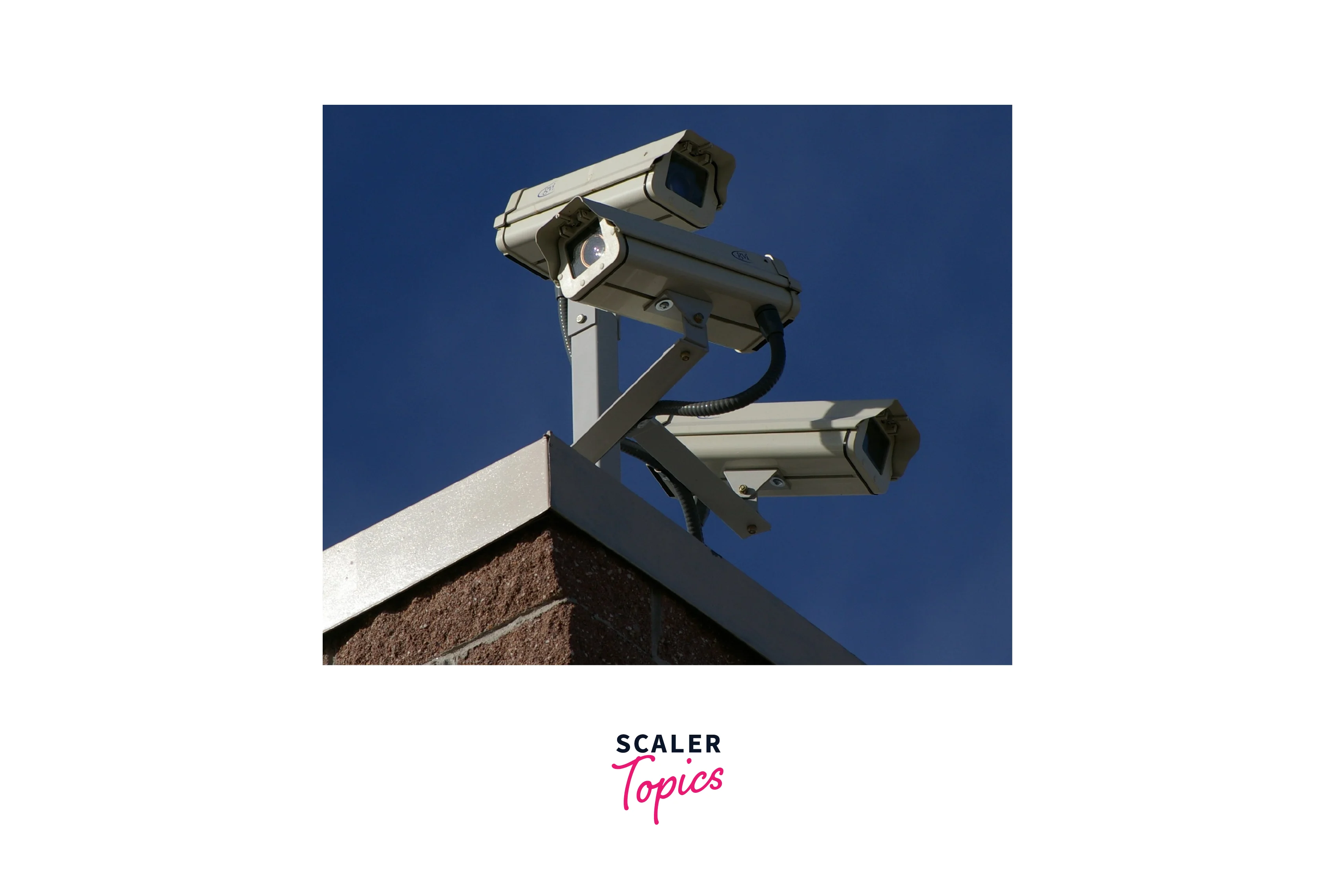
Types of CCTV Systems
Each system has its unique characteristics and advantages, catering to different surveillance requirements. Understanding the fundamentals of these systems is crucial for making informed decisions when implementing video surveillance solutions.
- Analog CCTV systems are the oldest and most traditional form of surveillance systems. They rely on analog cameras and recorders to capture and store video data. While analog systems are limited in terms of resolution and scalability, they have been widely used and are still prevalent in certain applications.
- IP-based CCTV systems have revolutionized video surveillance by utilizing digital cameras and recorders connected to network infrastructure. These systems offer greater flexibility, scalability, and higher image resolutions compared to analog systems. IP-based CCTV systems can leverage existing network infrastructure, allowing for easier integration with other devices and systems.
- Wireless CCTV systems utilize wireless cameras that transmit video data to a receiver or network access point. These systems eliminate the need for extensive wiring, making them ideal for areas where cabling installations are challenging or impractical. Wireless systems offer flexibility in camera placement and can be easily repositioned or relocated as needed.
- Hybrid CCTV systems combine the best of both analog and digital technologies. These systems integrate analog and digital cameras as well as recorders, providing a comprehensive surveillance solution. Hybrid systems are often chosen when upgrading from analog to IP-based systems, as they allow for a gradual transition and maximize the use of existing infrastructure.
Components of CCTV Systems
A CCTV system comprises several essential components, each playing a specific role in capturing, recording, displaying, and storing video data. Some of the essential components in a CCTV system are given below:
- Cameras:
Cameras are the backbone of any CCTV system, responsible for capturing video footage. They are available in various types, including:- Dome cameras:
These cameras have a dome-shaped enclosure, offering a discreet and compact design suitable for indoor surveillance. - Bullet cameras:
With a cylindrical shape, bullet cameras are commonly used for outdoor monitoring due to their weatherproof design. - PTZ cameras:
PTZ (Pan-Tilt-Zoom) cameras provide the ability to pan, tilt, and zoom, offering flexible control over the camera's field of view.
- Dome cameras:
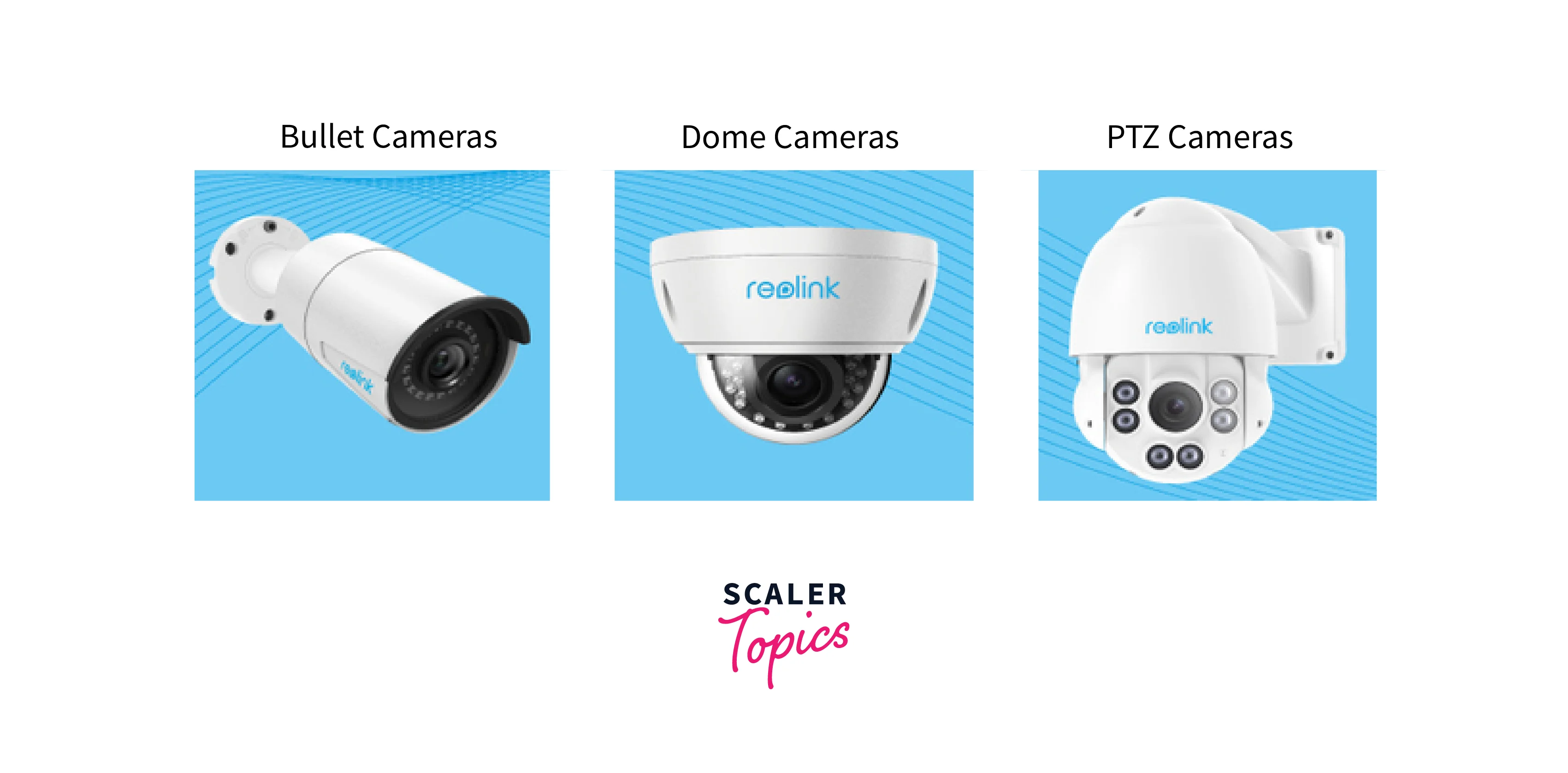
- Recorders:
Recorders are devices used to store and manage the recorded video data from the cameras. There are two primary types of recorders:- DVRs (Digital Video Recorders):
DVRs process and store analog video signals from analog cameras. They offer various recording modes and storage options. - NVRs (Network Video Recorders):
NVRs work with IP cameras, receiving and processing digital video data over a network. They provide advanced features and scalability for IP-based CCTV systems.
- DVRs (Digital Video Recorders):
- Monitors:
Monitors are used to display the video footage captured by the cameras. They come in different sizes and resolutions, allowing users to view live feeds or playback recorded videos. Monitors are an integral part of the surveillance system, enabling real-time monitoring and analysis. - Storage devices:
Storage devices are essential for storing recorded video data from the CCTV system. They come in various types, including:- Hard drives:
Internal or external hard drives are commonly used for local storage in DVRs and NVRs, providing ample space for video recordings. - Cloud storage:
Cloud-based storage services offer off-site storage options, allowing remote access to video data and providing redundancy and scalability.
- Hard drives:
These components collectively form a robust CCTV system, providing effective video surveillance, recording, monitoring, and storage capabilities. Choosing the right combination of cameras, recorders, monitors, and storage devices is crucial for designing a comprehensive and reliable video surveillance solution.
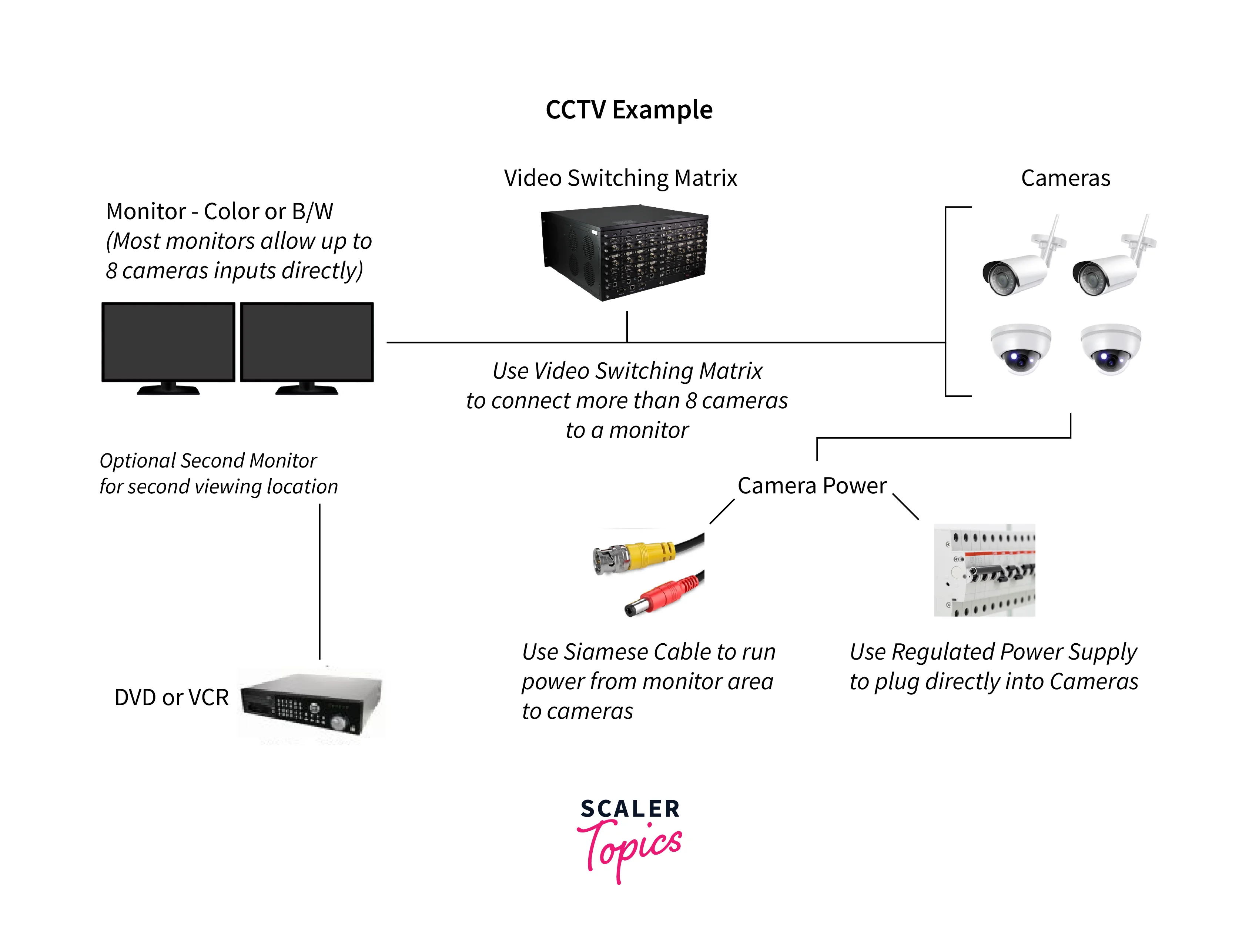
Importance of Video Compression for CCTV Systems
Video compression is the process of reducing the size of video data without compromising its quality. CCTV systems generate a large amount of video data, and without compression, the storage and transmission of this data would be impractical. There are two types of video compression:
- Lossless compression
- Lossy compression.
1. Lossless compression is a method of reducing the size of video data without any loss or degradation of information. It achieves this by employing various algorithms that identify patterns and redundancies within the video data. By eliminating these redundancies, the compressed file size is reduced while still retaining all the original data.
2. Lossy compression, on the other hand, aims to significantly reduce the size of video data by selectively discarding certain information that is deemed less crucial or less noticeable to the human eye. The discarded information is typically based on perceptual characteristics or statistical analysis of the video content.
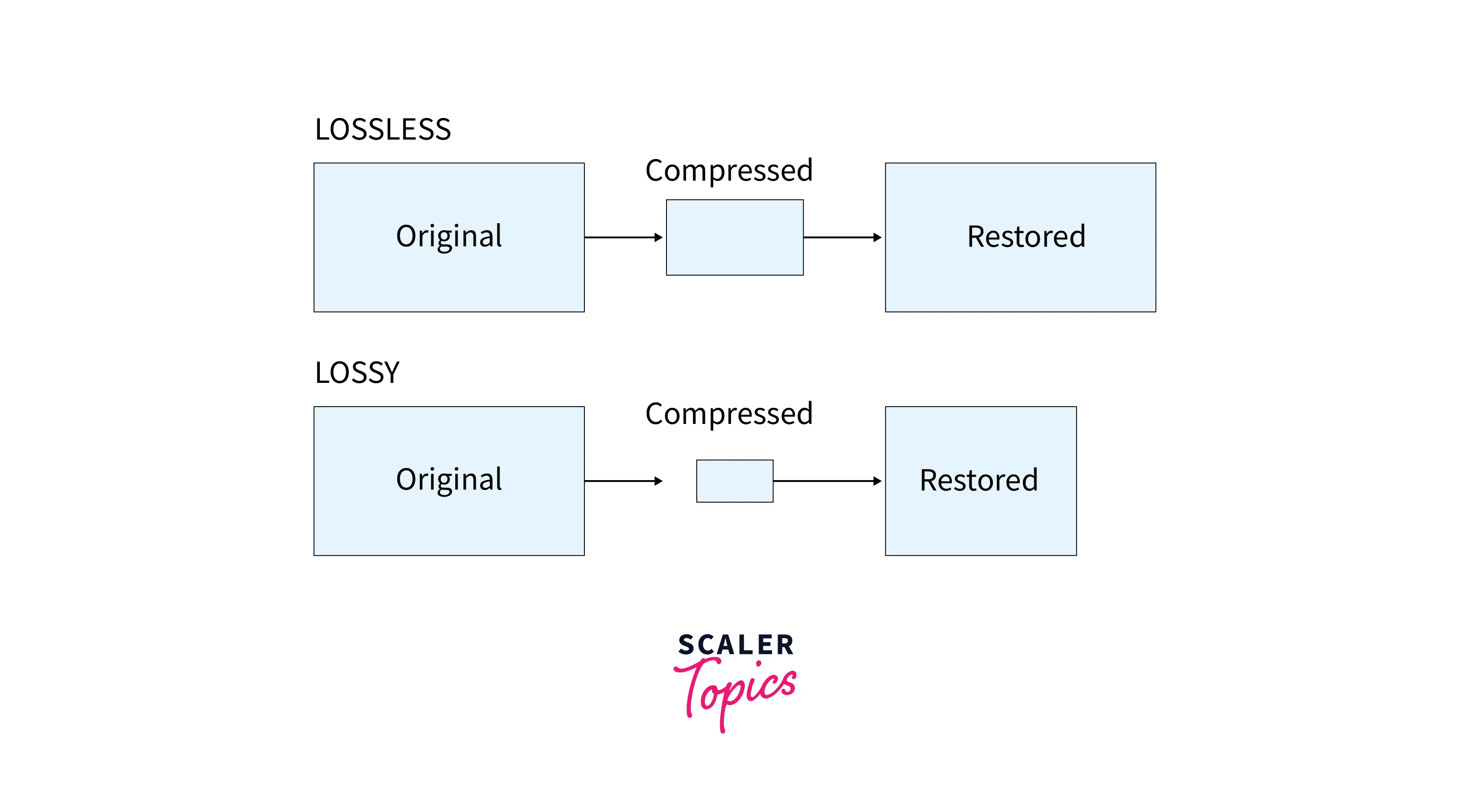
Features of OpenCV for Video Analysis and Processing
OpenCV, a Python-compatible open-source computer vision library, provides a diverse set of capabilities for video analysis and processing, particularly in the domains of video capture, video surveillance, and CCTV systems. These functionalities enable efficient handling and manipulation of video data, empowering developers to create robust applications for video capturing using OpenCV Python and other video-based tasks.
- Video Capture:
Capturing video data from a camera or a video source. - Video Streaming:
Transmitting video data over a network in real-time. - Image Processing:
Manipulating and enhancing images using various algorithms and techniques. - Object Detection:
Identifying and localizing objects within an image or video. - Motion Detection:
Detecting and tracking movement or changes in a video stream. - Tracking:
Continuously monitoring and following the movement of an object or multiple objects in a video sequence.
OpenCV provides a simple and easy-to-use API for capturing and processing video data.
Algorithms for Video Analysis and Processing in OpenCV
For the purpose of video surveillance and CCTV systems, OpenCV offers a multitude of algorithms for video analysis and processing, leveraging the power of computer vision and video capture with OpenCV in Python, as well as video streams. These capabilities enable the development of advanced applications for efficient and effective video surveillance and CCTV systems.
- Motion Detection:
Motion detection is the process of detecting motion in video data, and it is used to trigger an alarm or notification when motion is detected. Motion detection algorithms compare pixel intensity or other motion-related features between frames to determine if motion has occurred. It is commonly employed in video surveillance systems to trigger alarms or notifications when motion is detected. By monitoring changes in the video stream, motion detection helps enhance security and enables automated monitoring and response systems. - Object Detection:
Object detection is the process of detecting objects in video data, and it is used to identify and track objects of interest. These algorithms analyze features such as color, texture, shape, or context to identify and draw bounding boxes around the detected objects. Object detection is widely applied in various domains, including video surveillance, autonomous driving, robotics, and image retrieval. It enables the automated identification and tracking of specific objects within a video stream. - Object Tracking:
Tracking is the process of tracking objects in video data, and it is used to follow objects as they move around in a scene. Object tracking algorithms use various techniques, such as motion estimation, appearance modeling, and Kalman filtering, to track objects robustly. It enables continuous monitoring of objects as they navigate through different camera views or change their appearance due to occlusions or other factors. Object tracking finds applications in surveillance, video analysis, augmented reality, and robotics, where the reliable tracking of objects is essential for understanding their behavior, interactions, or control.
Implementation of Video Streams and CCTV Using OpenCV
When it comes to setting up video streams and CCTV systems with OpenCV, the implementation process consists of the following essential steps, leveraging the capabilities of computer vision and video surveillance. The following steps are used for video capturing using opencv python.
- Step 1. Install OpenCV:
Begin by installing OpenCV, which provides a user-friendly API for the video stream and CCTV system implementation. - Step 2. Configure Video Capture Device:
Set up a video capture device, such as a webcam or CCTV camera, to capture video data. - Step 3. Capture Video Data:
Utilize OpenCV functions to capture video data from the configured device. OpenCV offers support for various types of cameras, enabling easy integration. - Step 4. Transmit Video Data:
Implement video streaming by transmitting the captured video data over a network. OpenCV provides functions to facilitate the transmission of video data to a receiver. - Step 5. Multiple Camera Support:
If implementing a CCTV system, capture video data from multiple cameras using OpenCV's functions designed for multi-camera setups. - Step 6. Process Video Data:
Apply various algorithms and techniques provided by OpenCV for processing the captured video data. OpenCV offers a wide range of image and video processing functions, enabling tasks such as object detection, motion detection, and image enhancement. - Step 7. Store Processed Video:
Store the processed video data in different formats for future use. OpenCV provides functions to save the processed video data to storage devices, including hard drives or cloud storage.
By following these steps, developers can leverage the capabilities of OpenCV to implement video streams and CCTV systems with ease and efficiency.
Here's an example Python code snippet that captures video from a webcam and displays it in a window:
Output
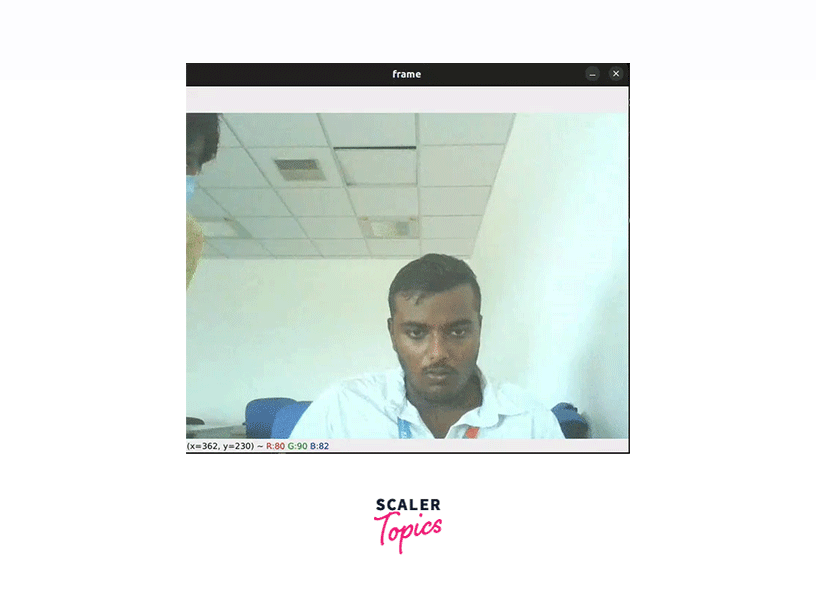
This code creates a VideoCapture object and opens the default camera (index 0). It then enters a loop where it reads frames from the camera and displays them in a window using imshow. The loop continues until the user presses the 'q' key, at which point the program exits.
We can also save the video stream to a file by creating a VideoWriter object:
Output:
The output will be stored in your local machine as a video file in the name of output.avi in .avi format.
Advantages and Disadvantages of Using OpenCV for CCTV Systems
Implementing CCTV systems for video capturing with OpenCV and Python presents several advantages, capitalizing on OpenCV's open-source nature, intuitive user interface, and cross-platform compatibility with multiple programming languages. Nevertheless, it is crucial to recognize and address certain limitations and drawbacks associated with OpenCV in the context of video capture.
Advantages
- Open-source nature:
OpenCV is an open-source library, providing access to its source code, enabling customization, and fostering a vibrant community for support and continuous improvement. - Ease of use:
OpenCV provides a straightforward and intuitive API, simplifying the implementation of video surveillance systems, even for developers with limited experience in computer vision. - Cross-platform compatibility:
OpenCV is designed to work seamlessly across various platforms, including Windows, macOS, Linux, iOS, and Android, ensuring flexibility and portability in system deployment. - Multilingual support:
OpenCV offers bindings for popular programming languages like Python, C++, Java, and more, allowing developers to leverage their preferred language for system development.
Disadvantages
- Limited camera support:
While OpenCV supports a wide range of cameras, certain models or specialized devices may have limited compatibility or require additional configuration and customization. - Lack of advanced features:
OpenCV provides fundamental functionality for video analysis and processing but may lack some advanced features found in specialized commercial surveillance software or hardware. - Performance considerations:
Depending on the complexity of the implemented algorithms and the hardware capabilities, performance optimization might be required to achieve real-time video processing in resource-constrained environments.
Despite these limitations, OpenCV remains a popular and valuable tool for implementing CCTV systems due to its extensive feature set, ease of use, and strong support from the open-source community.
Advanced Techniques for Video Analysis and Processing in OpenCV
OpenCV offers a range of advanced techniques for video analysis and processing, encompassing sophisticated methods that leverage deep learning and machine learning. These techniques include but are not limited to:
Deep Learning-Based Approaches for Video Analysis and Processing
Deep learning-based approaches have revolutionized video analysis and processing, enabling more accurate and robust results in various applications. Here are some key deep learning-based techniques used in video analysis and processing:
- Deep Neural Networks (DNN):
Deep neural networks, particularly Convolutional Neural Networks (CNNs), have been extensively used for video analysis tasks. CNNs can automatically learn hierarchical representations of video data, allowing them to extract relevant features and patterns. - Object Detection and Tracking:
Deep learning models such as Faster R-CNN, YOLO (You Only Look Once), and SSD (Single Shot MultiBox Detector) have significantly improved object detection in videos. These models can detect and track objects across frames, enabling applications like video surveillance, autonomous vehicles, and action recognition. - Action Recognition:
Deep learning models can recognize and classify human actions in videos. Recurrent Neural Networks (RNNs) and Convolutional Neural Networks (CNNs) have been combined to capture temporal dependencies and spatial information, respectively, for robust action recognition. - Video Segmentation:
Deep learning models, including Fully Convolutional Networks (FCNs) and Mask R-CNN, have been applied to segment objects or regions of interest in videos. This enables precise understanding and analysis of video content, benefiting applications like video editing, medical imaging, and autonomous navigation. - Video Captioning:
Deep learning models can generate textual descriptions or captions for videos. Recurrent Neural Networks (RNNs), especially Long Short-Term Memory (LSTM) networks, have been used to generate coherent and contextually relevant captions for video sequences. - Video Super-Resolution:
Deep learning models can enhance the resolution and quality of low-resolution videos. Generative Adversarial Networks (GANs) and convolutional networks have been employed to reconstruct high-resolution video frames, enabling better visual perception and analysis.
These deep learning-based approaches have significantly advanced video analysis and processing, allowing for improved object detection, action recognition, segmentation, captioning, and super-resolution. With their ability to learn complex representations from large amounts of video data, these techniques have opened up new possibilities for understanding and extracting valuable insights from videos.
Multi-Camera Tracking and Analysis
Multi-camera tracking and analysis involve the simultaneous tracking and analysis of objects across multiple camera views. It aims to combine the information from different camera angles to improve object tracking accuracy, robustness, and overall situational awareness. Here are key aspects of multi-camera tracking and analysis:
- Camera Calibration:
The first step is to calibrate the cameras by estimating their intrinsic and extrinsic parameters. This process ensures accurate alignment and synchronization of the camera views, enabling consistent tracking across different perspectives. - Object Detection and Tracking:
Object detection algorithms are applied to each camera view to identify and localize objects of interest. Multiple object trackers are then employed to track the detected objects across camera views, maintaining their identities as they move between different camera coverage areas. - Data Association:
To establish correspondences between objects in different camera views, data association techniques are used. These techniques match object tracks based on appearance, motion, and spatial relationships, allowing for seamless tracking across multiple cameras. - Fusion and Integration:
Information from different camera views are fused and integrated to generate a comprehensive understanding of the tracked objects. This includes merging object trajectories, aggregating appearance features, and integrating contextual information to improve tracking accuracy and reliability. - Event and Behavior Analysis:
By combining data from multiple cameras, events, and behaviors can be analyzed in a broader context. This involves detecting and analyzing complex events, such as interactions between objects, crowd behavior, and abnormal activities, which may not be apparent from individual camera views alone. - Intelligent Camera Coordination:
Multi-camera tracking systems may incorporate intelligent camera coordination techniques, where cameras actively collaborate to optimize the tracking process. This can involve adaptive camera selection, camera repositioning, and dynamic camera configuration to enhance tracking performance and coverage.
Multi-camera tracking and analysis find applications in various domains, including surveillance systems, smart cities, retail analytics, and sports analysis. By leveraging the collective information from multiple camera views, it enables more comprehensive monitoring, enhanced situational awareness, and advanced analysis of object behavior in complex environments.
Facial Recognition and Identification Using OpenCV
Facial recognition and identification using OpenCV involve the following steps:
- Face Detection:
Utilize face detection algorithms to locate and extract facial regions within an image or video frame. - Face Alignment:
Align detected faces to a standardized pose or orientation for better accuracy during recognition. - Feature Extraction:
Extract facial features, such as landmarks or descriptors, which capture unique characteristics of each face. - Face Encoding:
Convert the extracted features into a compact numerical representation, often referred to as face embedding or face encoding. - Face Database Creation:
Build a database by storing the face encodings of known individuals along with their corresponding labels or identities. - Face Recognition:
Compare the face encodings of new or unseen faces against the face database to identify or verify the individuals. - Identification or Verification:
Based on the matching results, perform identification to determine the most likely person's identity, or perform verification to validate if a given face matches the claimed identity.
OpenCV provides various functions and pre-trained models to perform facial recognition and identification tasks. These steps are fundamental in developing a facial recognition system using OpenCV, allowing for applications such as access control, surveillance, and personalized experiences.
Other Advanced Techniques
- Human detection and tracking:
OpenCV provides algorithms that focus specifically on human detection and tracking. These techniques utilize machine learning models trained on human-specific features, allowing for reliable detection and tracking of individuals within video streams. - Facial recognition:
OpenCV includes advanced algorithms for facial recognition, enabling the identification and verification of individuals within video data. These techniques utilize deep learning models to extract facial features and match them against known identities, facilitating various applications such as surveillance, access control, and biometric systems. - Deep learning-based object detection and tracking:
OpenCV incorporates deep neural networks, enabling accurate and efficient detection and tracking of objects in video streams. These algorithms employ pre-trained models such as YOLO (You Only Look Once) and SSD (Single Shot MultiBox Detector) to identify and track objects with high precision.
Best Practices for Video Analysis and Processing in OpenCV
Implementing video analysis and processing with OpenCV requires adherence to essential best practices to ensure optimal system performance, minimize false alarms and notifications, and uphold privacy and security standards.
- Performance optimization
- False alarm reduction
- Privacy and security considerations
- Data management and storage
- Algorithm validation and testing
By adhering to these best practices, developers can optimize the performance, accuracy, and reliability of video analysis and processing systems built with OpenCV while upholding privacy and security standards for the video data involved.
Conclusion
- Video surveillance has become an essential tool for ensuring the safety and security of people and property.
- VideoCapture with OpenCV and Python's is a powerful tool that made video surveillance more advanced and reliable.
- This comprehensive guide has provided an overview of video streams and CCTV systems, the importance of video compression, the features of OpenCV for video analysis and processing, the algorithms for video analysis and processing in OpenCV, the implementation of video streams and CCTV using OpenCV, advanced techniques for video analysis and processing in OpenCV, and best practices for video analysis and processing in OpenCV.
- By following these guidelines, you can enhance your video surveillance system and ensure that it provides reliable and accurate results.
